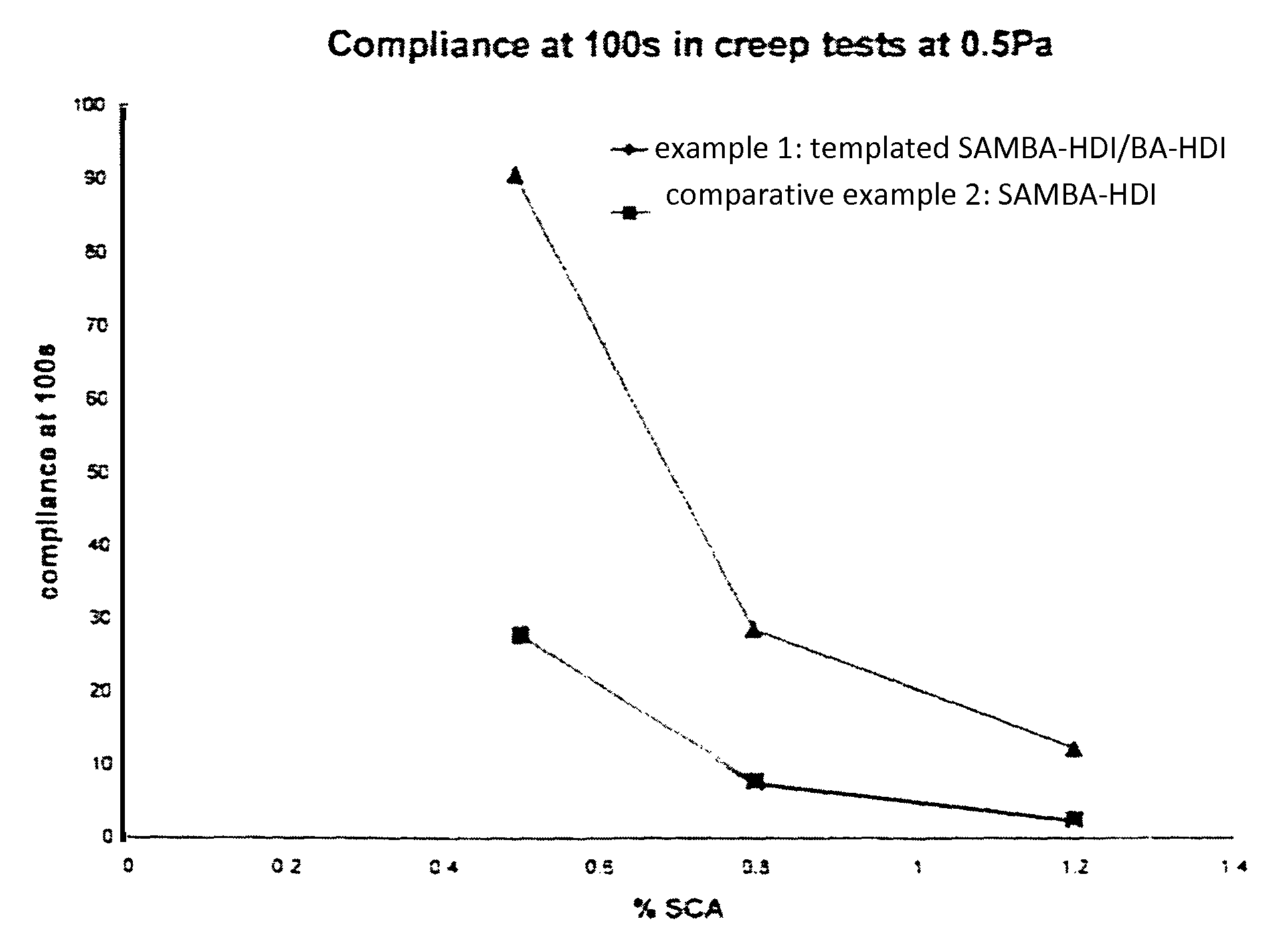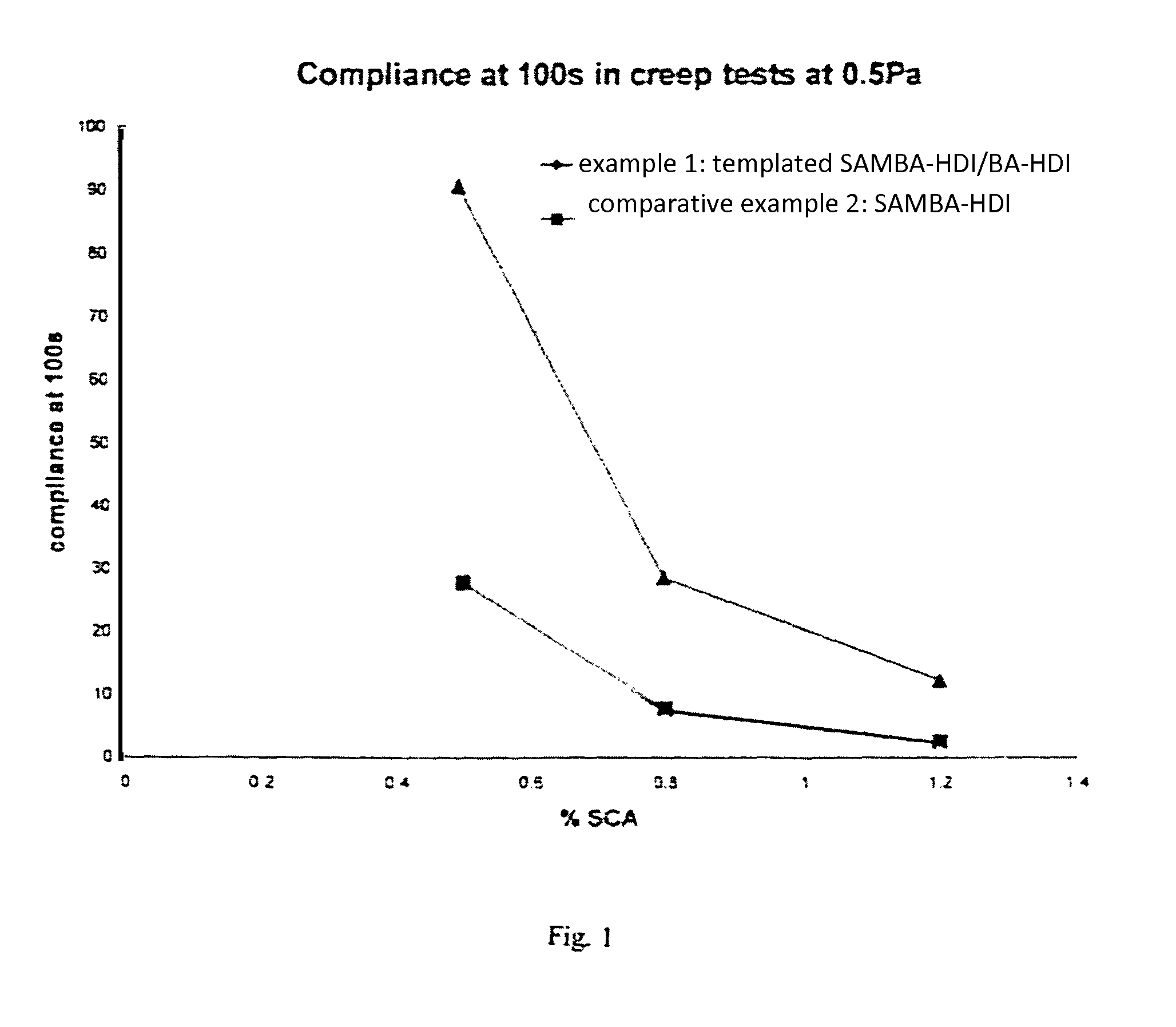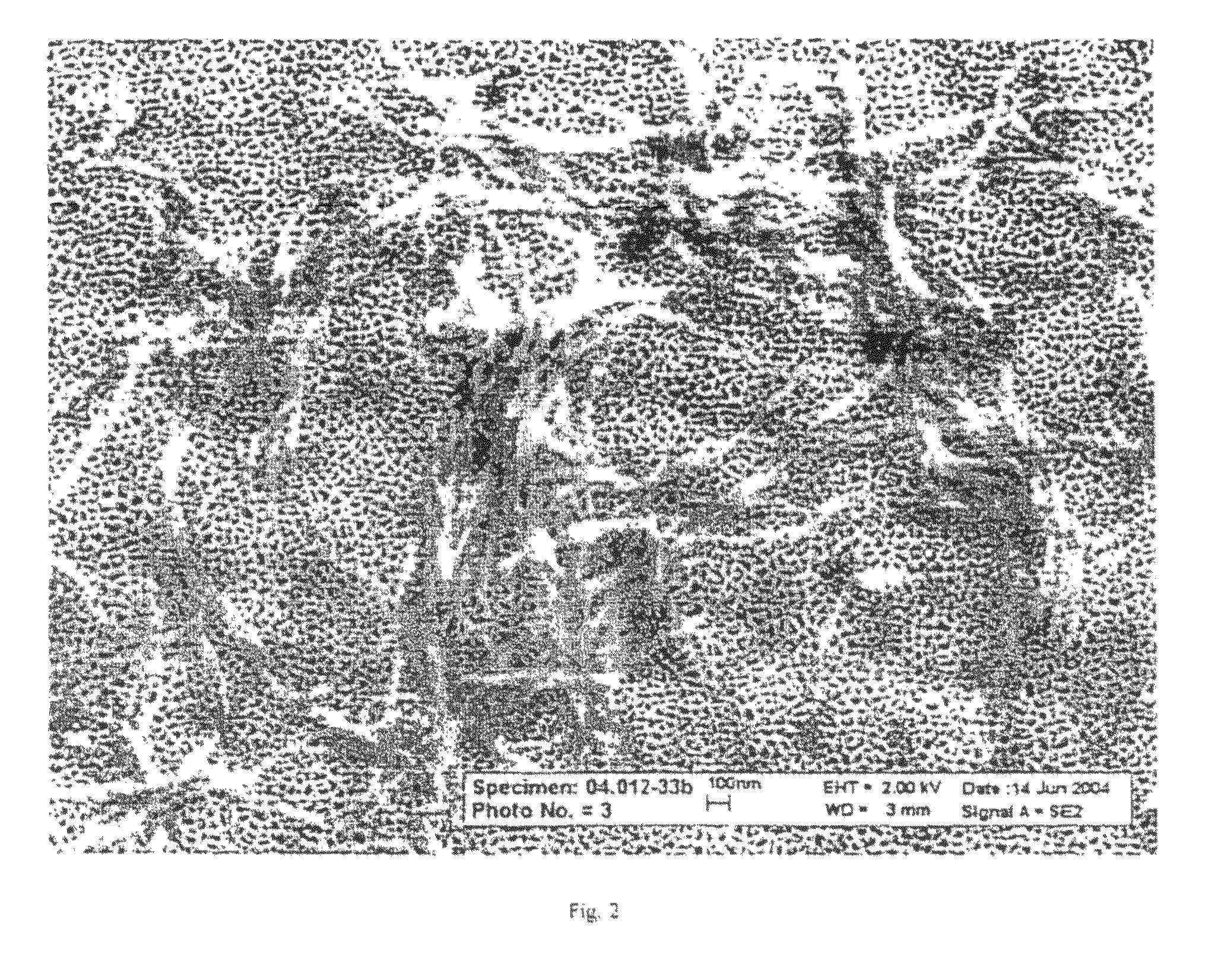Polyurea product as thixotropic rheology modifying agent
a technology of rheology modification agent and polyurea compound, which is applied in the field of thixotropic agent as a rheology modification agent, can solve the problems of reducing the rheological efficiency of polyurea compounds during curing reactions at higher temperatures, unable to meet all the demands, and limited overall shelf life or pot-life of such coating compositions
- Summary
- Abstract
- Description
- Claims
- Application Information
AI Technical Summary
Benefits of technology
Problems solved by technology
Method used
Image
Examples
example 1
(90 / 10) S / R-AMBA+HDI / BA+HDI in Setal 166 SS-80 (1:1)
[0091]100.0 g of Setal 166 SS-80 was added in a reactor, and mixed with 0.06 g (0.5 mmoles) of R-(+)-α-methylbenzylamine and 0.58 g (4.8 mmoles) S-(−)-α-methylbenzylamine, using a rotating disk dissolver at 1500 rpm for 2 minutes. The stirring speed was raised to 4000 rpm, and 0.46 g (2.7 mmoles) of 1,6-hexamethylenediisocyanate was added using a syringe. The mixture was stirred for an additional 30 seconds at 4000 rpm. The stirring speed was reduced to 1000 rpm and after 2 minutes 0.60 g (5.6 mmoles) benzylamine was added. A mixture of 0.49 g (2.91 mmoles) 1,6-hexamethylenediisocyanate and 0.49 g butylacetate was added to the reactor in 15 minutes using a pump. The mixture was stirred for an additional 30 seconds at 1000 rpm.
example 1a
(90 / 10) S / R-AMBA+HDI / BA+HDI in Setal 166 SS-80 (1:1)
[0092]100.0 g of Setal 166 SS-80 was added in a reactor, and mixed with 0.06 g (0.50 mmoles) of R-(+)-α-methylbenzylamine and 0.58 g (4.8 mmoles) S-(−)-α-methylbenzylamine, using a rotating disk dissolver at 1500 rpm for 2 minutes. The stirring speed was raised to 4000 rpm, and 0.46 g (2.7 mmoles) of 1,6-hexamethylenediisocyanate was added using a syringe. The mixture was stirred for an additional 30 seconds at 4000 rpm. The stirring speed was reduced to 1000 rpm and after 5 minutes 0.60 g (5.6 mmoles) benzylamine was added. The mixture was stirred for an additional 2 minutes at 1000 rpm. The stirring speed was raised to 1500 rpm and 0.50 g (2.97 mmoles) 1,6-hexamethylenediisocyanate was added using a syringe. The mixture was stirred for an additional 30 seconds at 1000 rpm.
example 2
(90 / 10) S / R-AMBA+HDI / BA+HDI in Setal 166 SS-80 (1:1)
[0099]100.0 g of Setal 166 SS-80 was added in a reactor, and mixed with 0.06 g (0.5 mmoles) of R-(+)-αmethylbenzylamine and 0.58 g (4.8 mmoles) S-(−)-α-methylbenzylamine, using a rotating disk dissolver at 1500 rpm for 2 minutes. The stirring speed was raised to 4000 rpm, and 0.46 g (2.7 mmoles) of 1,6-hexamethylenediisocyanate was added using a syringe. The mixture was stirred for an additional 30 seconds at 4000 rpm. The stirring speed was reduced to 1000 rpm and after 2 minutes 0.60 g (5.6 mmoles) benzylamine was added. A mixture of 0.49 g (2.9 mmoles) 1,6-hexamethylenediisocyanate and 0.49 g butylacetate was added to the reactor in 15 minutes using a pump. The mixture was stirred for an additional 30 seconds at 1000 rpm.
PUM
| Property | Measurement | Unit |
|---|---|---|
| width | aaaaa | aaaaa |
| enantiomeric excess | aaaaa | aaaaa |
| width | aaaaa | aaaaa |
Abstract
Description
Claims
Application Information
 Login to View More
Login to View More - R&D
- Intellectual Property
- Life Sciences
- Materials
- Tech Scout
- Unparalleled Data Quality
- Higher Quality Content
- 60% Fewer Hallucinations
Browse by: Latest US Patents, China's latest patents, Technical Efficacy Thesaurus, Application Domain, Technology Topic, Popular Technical Reports.
© 2025 PatSnap. All rights reserved.Legal|Privacy policy|Modern Slavery Act Transparency Statement|Sitemap|About US| Contact US: help@patsnap.com



